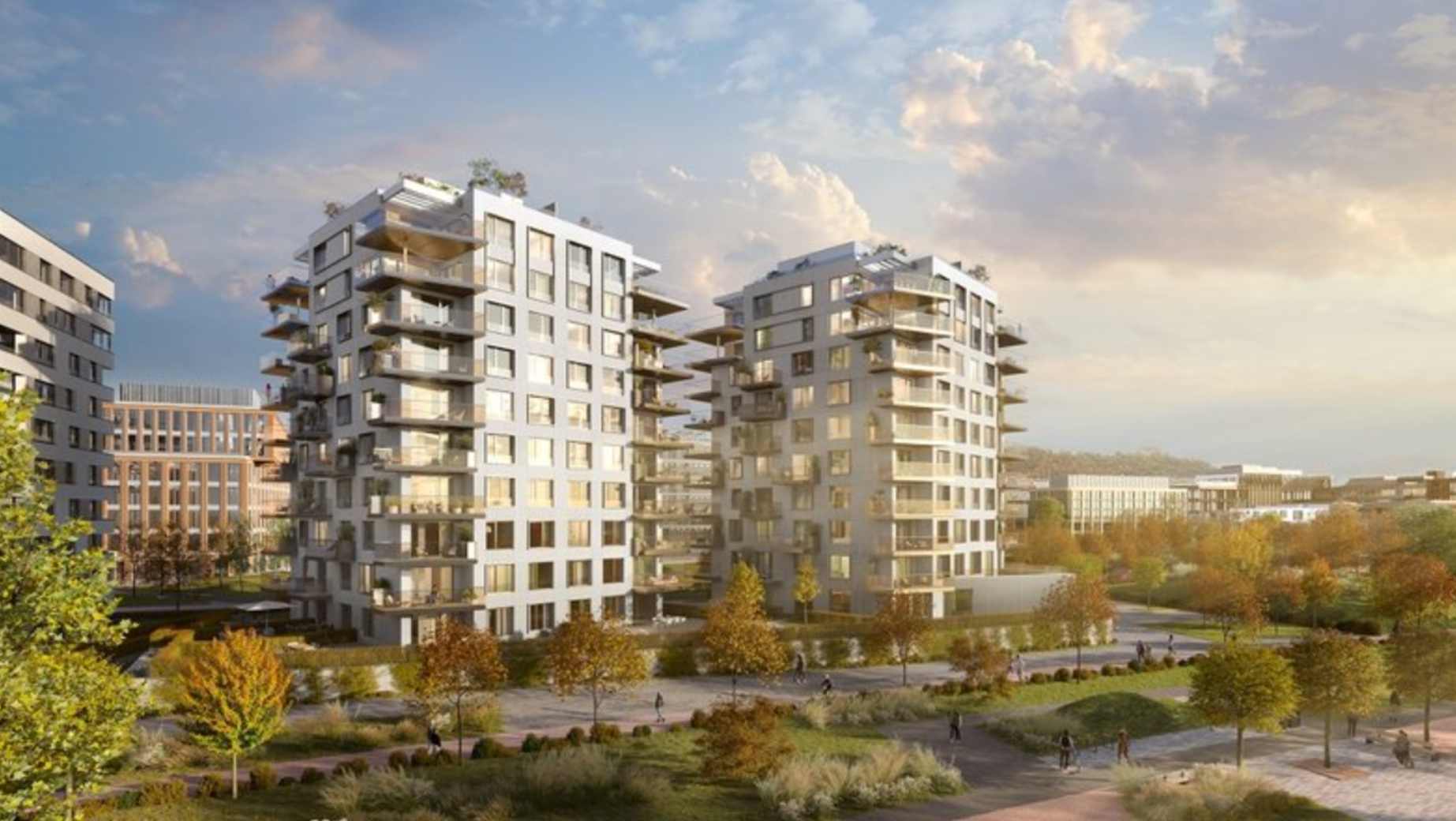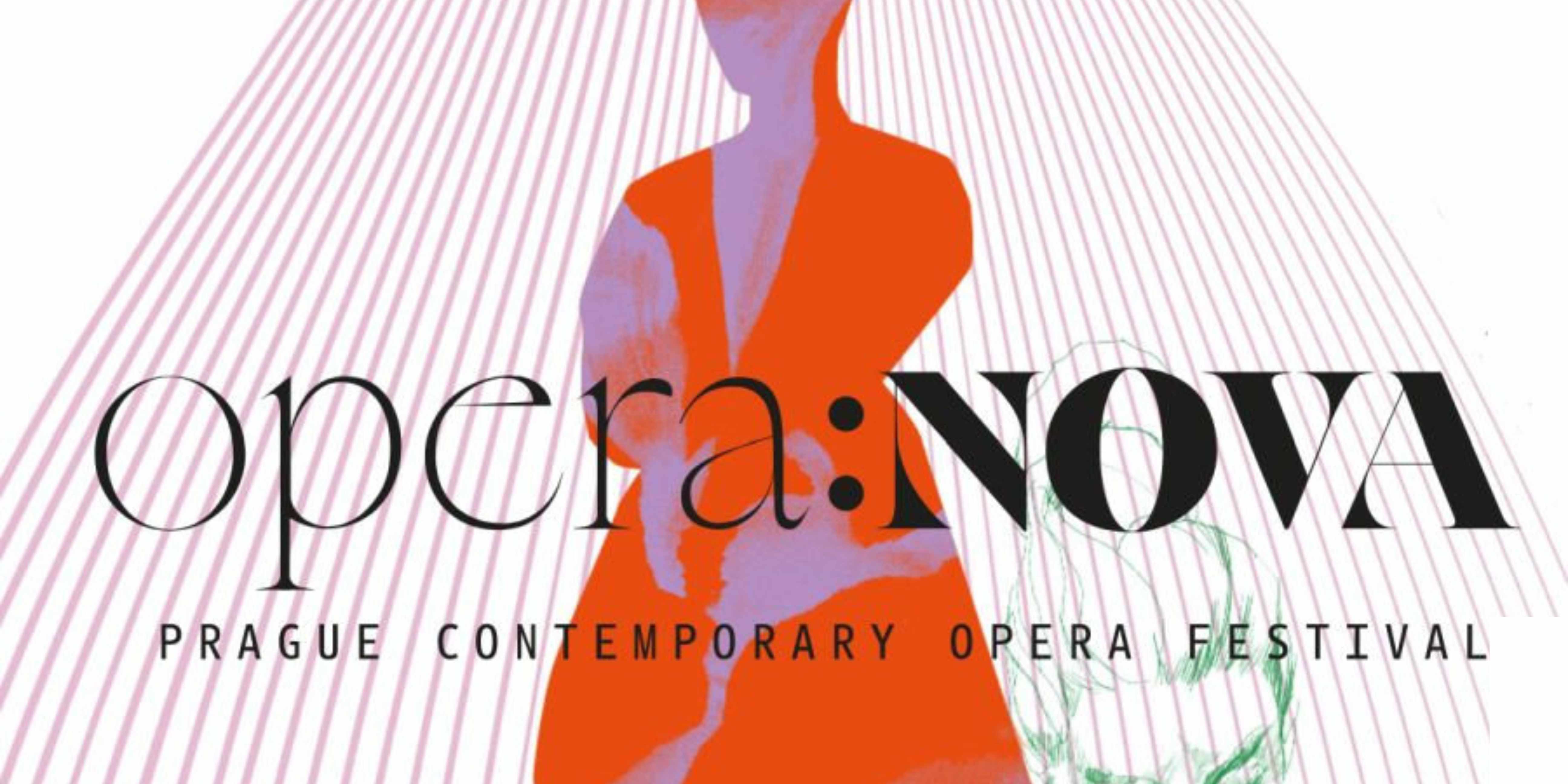The case of a Prague tram driver who assaulted a Ukrainian grandfather in front of his two-year-old grandson is heading to a full public trial after the defendant protested a guilty verdict and suspended sentence.
The incident, which occurred on February 27 at the Otakarova stop, drew national outrage when a viral video showed the driver shouting at the passenger before physically attacking him.
The man had been holding his grandson at the time. The situation escalated after the child briefly stood on the seat and kicked the protective glass separating the driver’s cabin from the passenger area in a Škoda 15T tram.
Following a police investigation, the Prague District Prosecutor’s Office filed formal charges on May 22. The driver, 30, was indicted under two criminal statutes: hooliganism (§358, paragraph 1) and insulting a nation, race, ethnic or other group (§355, paragraph 1, item “a”). Prosecutors requested a five-month suspended sentence, a two-year probation period, and mandatory participation in a rehabilitation and social education program.
On May 30, the Prague 10 District Court issued a criminal order (trestní příkaz), a simplified verdict used when evidence is clear and the proposed sentence does not exceed 12 months. The judge agreed with the prosecutor’s recommendations and found the driver guilty.
However, the defendant immediately filed a formal protest, objecting both to the verdict and the sentence. As a result, the case will now proceed as a standard public trial, set to begin on June 25. Under Czech law, the new trial could lead to the same punishment or a harsher sentence.
The attack sparked widespread public condemnation, amplified by footage recorded by a passenger and shared across Czech social media and major news platforms.
Prominent politicians also addressed the incident, underscoring broader concerns about xenophobia and behavior in public services.
The upcoming trial is expected to draw media attention, with human rights advocates and local politicians closely watching whether the final judgment will reflect the gravity of the attack and the ethnic dimension of the case.
Would you like us to write about your business? Find out more
From quirky flavours like parmesan and lavender to classic favourites such as chocolate and strawberry, Prague offers a rich variety of ice creams to satisfy every palate.
Here are the best places to enjoy ice cream across the city.
1. Angelato (Újezd, Břevnov, Dejvice)
Angelato is a family-owned ice cream shop celebrated for its artisanal gelato made fresh daily without artificial additives. This spot is perfect for adventurous eaters, featuring unusual flavours like parmesan, pumpkin, rhubarb, avocado, and nettle. With locations in Újezd, Břevnov, and Dejvice, Angelato is a must for anyone curious about unique taste experiences.
Visualizza questo post su Instagram
2. Crème de la Crème (Multiple Locations)
Known for its commitment to purity, Crème de la Crème produces ice creams free from chemicals, artificial colours, and preservatives. Most flavours are gluten-free except for Oreo and Tiramisu. Drawing from traditional Italian techniques, each flavour follows its own distinctive recipe. The flagship location at the National Theatre also hosts the Crème de la Crème Ice Cream Museum, featuring over 200 historical items including vintage ice cream machines and bar setups.
Visualizza questo post su Instagram
3. Puro Gelato (Výtoň, Karlín, Vršovice)
True to its name, Puro (“pure” in Italian) focuses on clean ingredients, some grown in-house. Their gelato contains no solidified fats or flavour enhancers and is served at a warmer temperature, allowing the natural flavours to shine without numbing the palate. You can find Puro Gelato in Výtoň, Karlín, and Vršovice.
Visualizza questo post su Instagram
4. Zmrzlinárna Braník (Braník)
Zmrzlinárna Braník proves you don’t need to be downtown to enjoy quality ice cream. This neighbourhood parlour makes traditional ice cream using only fresh, homemade ingredients. Fruity flavours contain real fruit, while creamy ones are made with genuine cream — no shortcuts, just honest ice cream.
Visualizza questo post su Instagram
Parlour in Karlín offers a unique experience: the ice cream sandwich, locally called a “Parlorka.” Here, you can pair freshly baked cookies with one or two scoops of ice cream, plus your choice of toppings. It’s the only place in the country serving this special treat and is also known for its impressive cakes.
Visualizza questo post su Instagram
6. Amato Gelateria (Kamenická, Vodičkova)
Amato Gelateria keeps it simple but high-quality. Following the Italian tradition, their gelato uses only essential ingredients with fresh, seasonal fruit sourced from local farmers. The result is a natural, flavourful gelato naturale.
Visualizza questo post su Instagram
This parlour features four staple flavours—chocolate, vanilla, strawberry, and pistachio—while rotating the other twelve regularly to offer something new on every visit. Half of the menu consists of sorbets, making it a great choice for vegans or those avoiding lactose and gluten.
Visualizza questo post su Instagram
8. Světozor (Pasáž Světozor and Other Locations)
A true Prague classic, Světozor’s famous strawberry-banana cone remains a local favourite. While queues are common, especially for their cakes and ice creams, the wait is worth it. Each branch sticks to the same reliable recipe using real bananas and frozen strawberries for authentic taste.
Visualizza questo post su Instagram
Would you like us to write about your business? Find out more
If the Czech Republic reaches the semi-finals of the Ice Hockey World Championship, Prague will open a public fan zone on Old Town Square, allowing fans to watch and support their team together in the heart of the city.
The tournament is currently underway in Sweden and Denmark, and should the Czech team advance, the fan zone will host free live broadcasts of both semi-final games on Friday, May 23 (scheduled for 14:20 and 18:20), followed by the bronze medal game and the final on Saturday, May 24 (15:20 and 20:20).
A large LED screen (9×5 meters) will be installed, along with refreshment tents, toilets, and a stage for live music and presenters who will entertain the crowd between matches.
City officials confirmed they are in talks with Czech Television to secure broadcasting rights for the public viewing.
The Czech team is having a strong run at this year’s tournament, having won all five opening matches in Group B and already securing a spot in the playoffs.
Their quarter-final opponent is yet to be determined.
The fan zone initiative mirrors a similar setup during the 2024 Ice Hockey World Championship, which took place in Prague and Ostrava.
That year, the Czech Republic won gold, and thousands of fans gathered in Old Town Square to celebrate. If history repeats itself, Prague is ready once again to turn its historic center into a celebration hub for hockey fans.
Would you like us to write about your business? Find out more
The long-awaited reconstruction of Prague’s Libeň Bridge has officially begun.
On Tuesday, work started on the project’s first phase, focusing on a deteriorating structure at the intersection of Vojanova and Voctářova Streets in Prague 8. Demolition on the site had already begun last April.
According to Filip Hájek, Director General of the Technical Administration of Communications (TSK), this initial stage should be completed by early 2027, with an estimated cost of 425 million CZK.
At a ceremonial event on-site, Prague Deputy Mayor Zdeněk Hřib (Pirates) called the moment historic.
“We’ve waited a long time for this,” said Hřib. “For years, there were only proposals, plans, and visualisations of what the bridge could look like. Today, we’re moving past those visions and starting actual construction on part of the Libeň Bridge.”
The project is about more than just transport. It also envisions new public spaces beneath the bridge. A small urban square will be built under the arches, creating links between the administrative and residential zones of Libeň.
“We’re building a square that will connect these two parts of the district. There will be cafés and services — it’ll be a lively and useful space,” said Petr Tej, architect and co-author of the nearby Štvanická Footbridge.

The new section will preserve elements of Janák’s original design while updating the structure for modern use. “The bridge is being rebuilt where the eastern branch of the Vltava once flowed, so the river’s former path is being acknowledged in the design,” added Tej.
The full 1.2-kilometer bridge stretches from Holešovice over the Vltava and continues with an inundation bridge, which acts as flood protection. The newly launched construction includes work on the embankment portion of the bridge.
From there, the project will extend toward Palmovka, where a new Vojanova underpass will be added to improve pedestrian access from the metro station to nearby shopping areas.
The entire reconstruction is divided into four stages, with the remaining phases still in the permitting or design phase.
Would you like us to write about your business? Find out more
Eighty years after the Prague Uprising, the city will mark the anniversary with a powerful mix of remembrance and celebration.
Prague 1 is organizing two days of events that will take over some of the city’s most iconic spots on May 5 and May 8.
“We’re not just marking a date—we’re remembering the bravery that stood firm when everything seemed lost,” said Terezie Radoměřská, mayor of Prague 1. “These moments shaped our identity. And they remind us that freedom isn’t something to take for granted—it was paid for with lives.”
May 5: Commemorating the Start of the Uprising
The commemorations begin at 10 a.m. on May 5 at the Old Town Hall, where officials and members of the Czechoslovak Legionary Community will gather by the memorial plaque to honor those who died during the 1945 uprising. A short ceremony will also be held in the nearby Cross Chapel and courtyard.
Later that afternoon, the Old Town Square will turn into a kind of living history experience. At 2 p.m., an event titled “Old Town Square in Flames” will bring the past to life through sound, visuals, and performance. Organized by Prague City Hall, Prague 1, Media Park, and the Museum of Memory of the 20th Century, the program includes:
- The bells of the Church of Our Lady before Týn ringing across the square
- A public reading of names of those who fell in the uprising
- An open-air exhibition with virtual reality elements
- Evening film screenings related to the final days of the war
At 7 p.m., the action shifts toward the riverfront. A symbolic barricade will be constructed between the National Theatre and Café Slavia, recreating the resistance effort that played out in this very area eight decades ago.
The project, called “To the Barricade! The National Theatre, Occupied and Resisting,” will feature a memorial procession, a live broadcast by Czech Television, a performance by the Kühn Children’s Choir, and a set of historical exhibits paying tribute to artists and performers who joined the armed resistance.
May 8: National Remembrance at Wenceslas Square
On May 8, the anniversary of the end of World War II in Europe, Prague will once again become a stage for public remembrance.
The nationwide project “Let’s Not Forget 80”, organized by the non-profit Paměť národa (Memory of Nations), will unfold in the lower part of Wenceslas Square, with Prague 1 supporting the effort with a 100,000 CZK contribution.
From noon until the evening, the square will host a series of interactive events, including:
- Personal stories and memorial exhibitions
- Public talks and appearances by well-known Czech personalities
- Live concerts and performances across the square
At 7 p.m., the country will pause for a minute of silence—a symbolic gesture meant to unite people across Czechia in shared remembrance.
Would you like us to write about your business? Find out more
The second edition of the Red Hot Chilli Festival is set to turn up the heat once again, bringing a day of bold flavours, chilli-infused drinks, and spicy experiences of all kinds.
The event takes place on Sunday, May 4, from 12 PM to 9 PM at Cross Club in Prague. Entry is free.
More than a dozen vendors will be on hand, offering everything from homemade hot sauces and chilli seeds to spicy dishes and drinks.
Expect juicy burgers, crispy Belgian fries, and a range of international bites from Mexico and Colombia. Adventurous eaters can sample spicy beer or even seasoned insects.
Highlights of the day include the infamous chilli-eating contest, hosted by local spice legend Palíto, and a talk on chilli travel adventures.
Visitors can take a break in the Cross Club beer garden or relax with a drink in the upstairs café.
For the full list of stalls and updates, visit the official website or check out the event on Facebook.
Would you like us to write about your business? Find out more
The streets and parks of Rohan City, a new district taking shape along Rohanské nábřeží in Prague’s Karlín, will be named after renowned philosophers from both Czechia and abroad.
A new square, set to become the central hub of the area, will bear the name of French thinker Simone Weil, one of the most influential philosophers of the 20th century.
A Tribute to Great Thinkers
The Sekyra Group, the developer behind Rohan City, is leading one of Prague’s most ambitious urban transformation projects. The company’s founder, Luďek Sekyra, envisioned naming the new streets to honor prominent philosophers who have shaped moral and political thought.
“I am pleased that our proposal to commemorate key Czech and Western philosophers has been accepted. These individuals have played a crucial role in shaping our civilization, influencing discussions on values, freedom, morality, and justice, both through their work and personal convictions,” said Luďek Sekyra.
Famous Names in Karlín
The streets parallel to Rohanský nábřeží, which borders the Rohan City project, will be named after philosophers J. L. Fischer, Jan Sokol, Immanuel Kant, Jacques Derrida, John Stuart Mill, and Roger Scruton, legendary supporters of domestic dissent.
The streets perpendicular to them will commemorate Emmanuel Levinas, Radim Palouš, Ludwig Wittgenstein, Georg Wilhelm Friedrich Hegel, Edmund Husserl, Rudolf Carnap, Erazim Kohák, Ladislav Hejdánek, and Thomas Hobbes, along with businessman Vlastimil Zátka.
The parks will also bear the names of influential philosophers. The park closest to the Vltava will be named Locke’s Park, honoring the English advocate of freedom and tolerance, John Locke. The neighboring park will commemorate Derek Parfit, the renowned British moral philosopher.
The new square in Rohan City is proposed to be named after Simone Weil, a French philosopher and social activist.
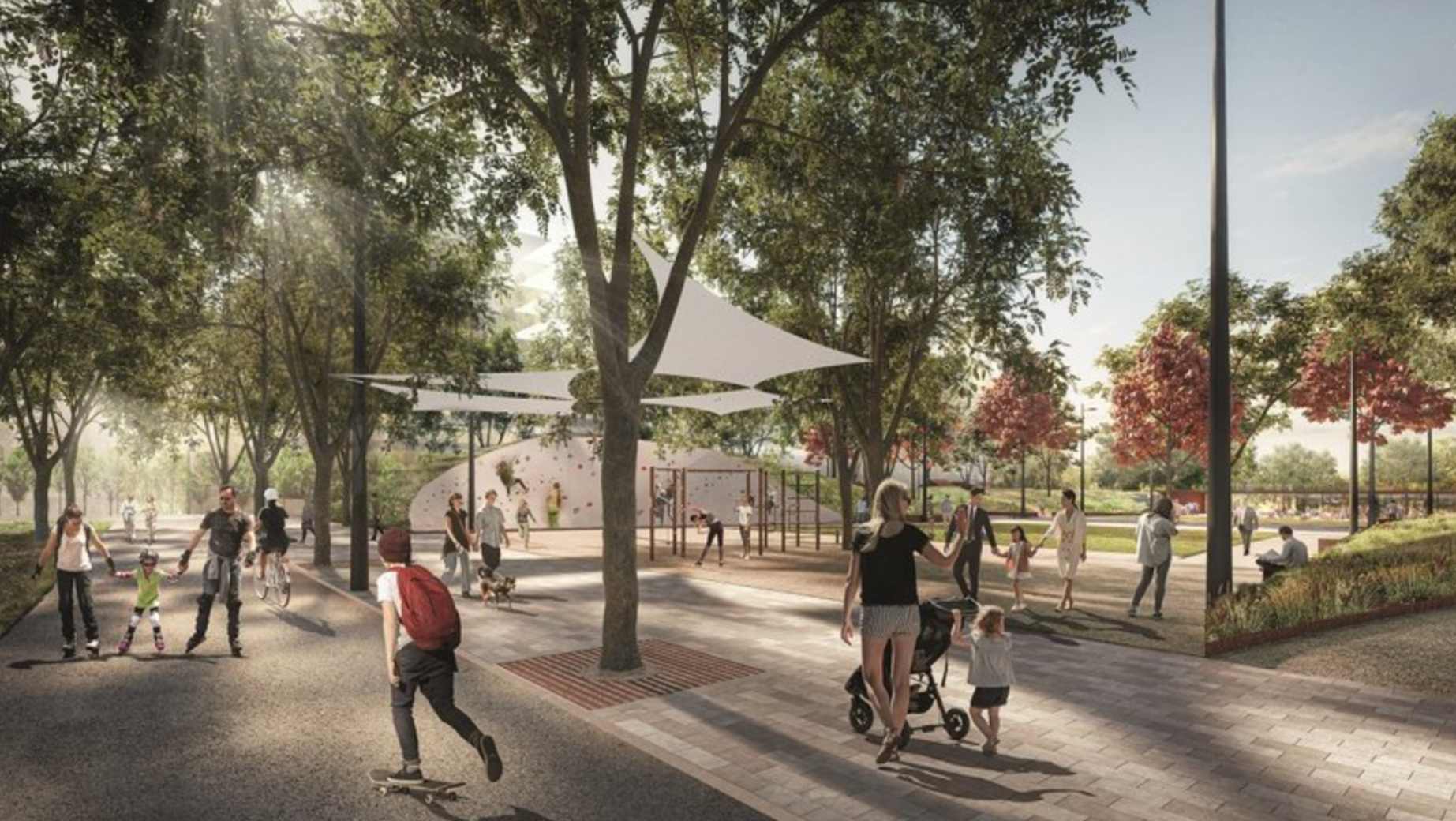
Apartments and Offices by Renowned Architects
The first phase of the Rohan City project, launched in 2021, has already delivered 220 apartments across four residential buildings. Two of these—Diamanty Karlín—were designed by acclaimed architects Eva Jiřičná and Petr Vágner of AI-DESIGN. The other two, Riviéra Karlín, were crafted by architects from EBM Expert.
The district also features two office buildings: the Arché building by Jiřičná and Vágner and the A2 building by Jakub Cigler. The Arché building, originally named A1, now serves as the headquarters of the Sekyra Group.

A New School and Public Spaces
Beyond housing and offices, Rohan City will feature cafes, shops, sports facilities, and green spaces.
A new school is also planned, set for completion by mid-2029. In collaboration with Prague 8 and the city of Prague, the school will be located near Carnapová, Millová, and Koháková streets, adjacent to a cycle path.
Would you like us to write about your business? Find out more
This weekend, on March 22nd and 23rd, marks the launch of the new tourist train season in Prague and the Central Bohemian Region.
If you’re interested in exploring the beauty of Central Bohemia, you can look forward to both classic rides to popular tourist destinations and some new routes.
In addition to the popular nostalgic trips to Posázaví, steam trains will also be heading to Dobříš and Rožmitál pod Třemšínem this year.
Families with children and cyclists can once again plan weekend getaways to the Slánsko region on the Cyklohráček train. Additionally, this summer, the Cyklohráček will offer special weekday excursions to new destinations beyond Central Bohemia.
Petr Tomčík, ROPID Director: “This year, for the eleventh time, our special joint train for small and big trippers – the Cyklohráček – will set off from Prague to Slany.”
Popular train routes to Český Ráj (Bohemian Paradise) and the Brda region are still available, along with a variety of events organized by Czech Railways (ČD) in cooperation with the City of Prague, the Central Bohemian Region, Prague Integrated Transport (PID), and other partners.
The tourist train season runs until October 28th.
The Central Bohemian Region is also attracting visitors with its ever-expanding network of cycling paths accessible from railway stations. This allows visitors to combine a scenic train ride with a refreshing bike adventure.
Nostalgic Train Rides Return to Prague and Central Bohemia
Czech Railways is bringing back its beloved historic trains for the 2025 tourist season, offering scenic rides through some of the most picturesque regions of Prague and Central Bohemia. These special steam and retro train journeys will take passengers to castles, historic towns, and cultural festivals, providing a unique way to explore the country’s rich heritage.
Historic Train Schedule
- April 19, 2025: Steam to Křivoklát – A round-trip steam train from Prague-Vršovice to the Easter fair at Křivoklát Castle. Passengers can also visit Rakovník or explore the ČD Museum in Lužná u Rakovníka.
- April 20, 2025: Steam through the Posázaví – This historic steam train departs from Prague-Vršovice and travels to Týnec nad Sázavou, where a traditional Easter event awaits at the local castle.
- June 21, 2025: Posázavská Trail Anniversary – A special steam train ride from Prague-Vršovice to Pikovice, celebrating the anniversary of the famous Posázavská Trail, in collaboration with the Czech Tourist Club.
- June 22, 2025: Steam from Kolín to Zruč nad Sázavou – Departing from Kolín, this steam-powered journey passes through Kutná Hora before reaching Zruč nad Sázavou, offering a nostalgic experience through the Bohemian countryside.
- August 30, 2025: Retro Train to Tank Day in Lešany – A unique retro train ride from Prague-Vršovice to Krhanice, organized primarily for visitors heading to the annual military museum event in Lešany.
- October 18, 2025: Steam to Dobříš – A historic steam train ride from Prague-Vršovice, passing through Vrané nad Vltavou, and arriving in Dobříš, a town known for its charming chateau and autumn scenery.
- October 19, 2025: Steam through the Posázaví – Another round-trip steam train from Prague-Vršovice to Týnec nad Sázavou, offering breathtaking views of the Sázava River Valley.
Would you like us to write about your business? Find out more
On February 14, 1945, the American Air Force carried out an air raid over Prague which ranks as the most futile attack on Czech territory of the Second World War.
Seventy-eight years later it is still not clear whether the attack was an accident caused by bad weather conditions and the fact Prague and Dresden looked similar from the air, or whether it was a deliberate attack.
Due to low visibility, and some apparent similarity in the layout between the two cities from the air, the American forces dropped over 150 tons of bombs over the Czech capital, resulting in what was easily the worst destruction Prague saw during WWII – and perhaps, in its history.
While much of the historical center was spared, the bombs hit nearby districts in New Town, Vinohrady, Vyšehrad, Vršovice, Nusle, and elsewhere.
701 people died during the attack, which wounded a further 1,184. While air raid sirens went off during the bombing, it has been theorized that many citizens ignored them, having become accustomed to the familiar sounds that ring out each month.
Buildings such as the 14th-century Emmaus Monastery in Vyšehrad and the 17th-century Faust House by Karlovo náměstí were mostly destroyed and later rebuilt.
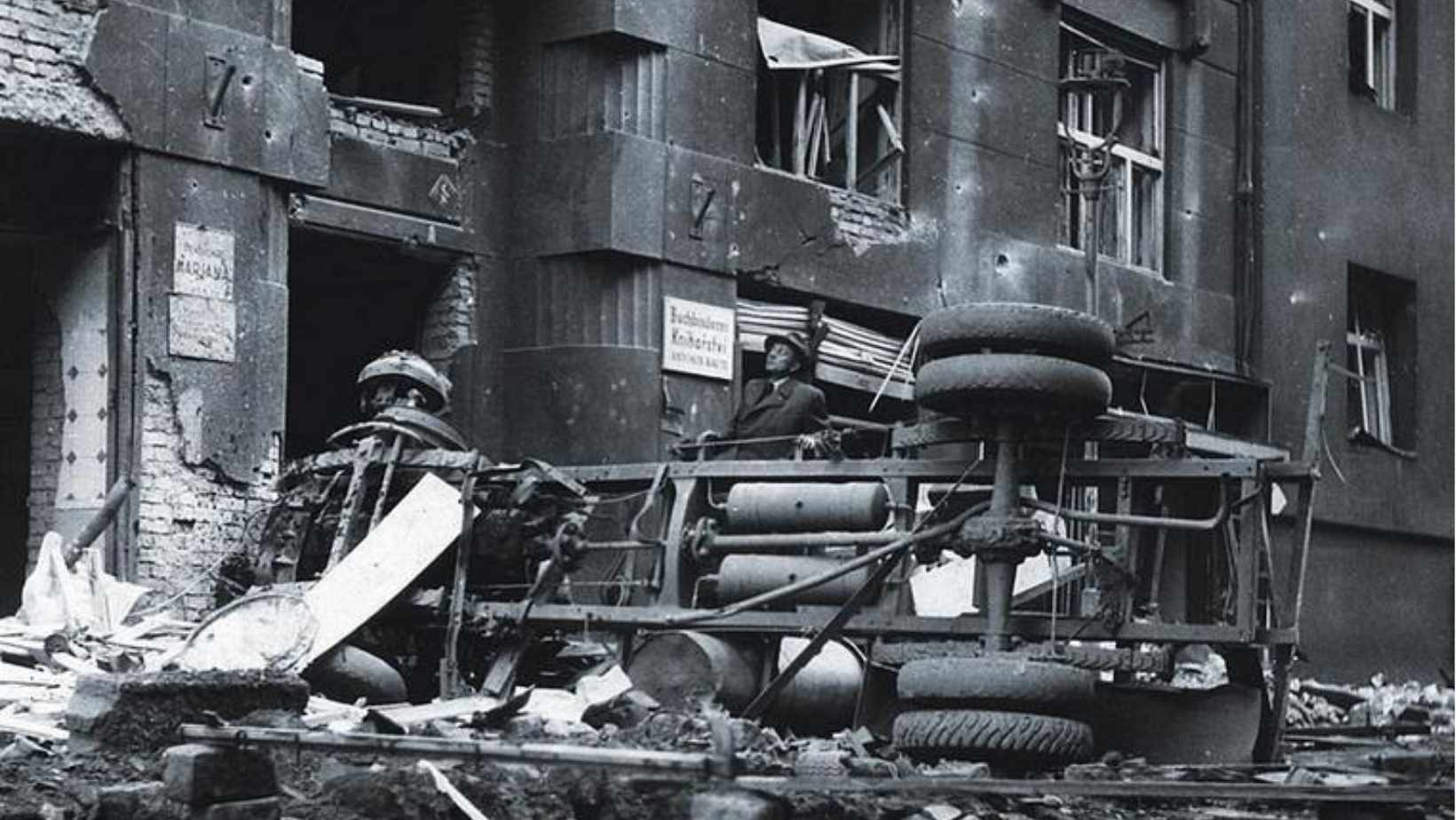
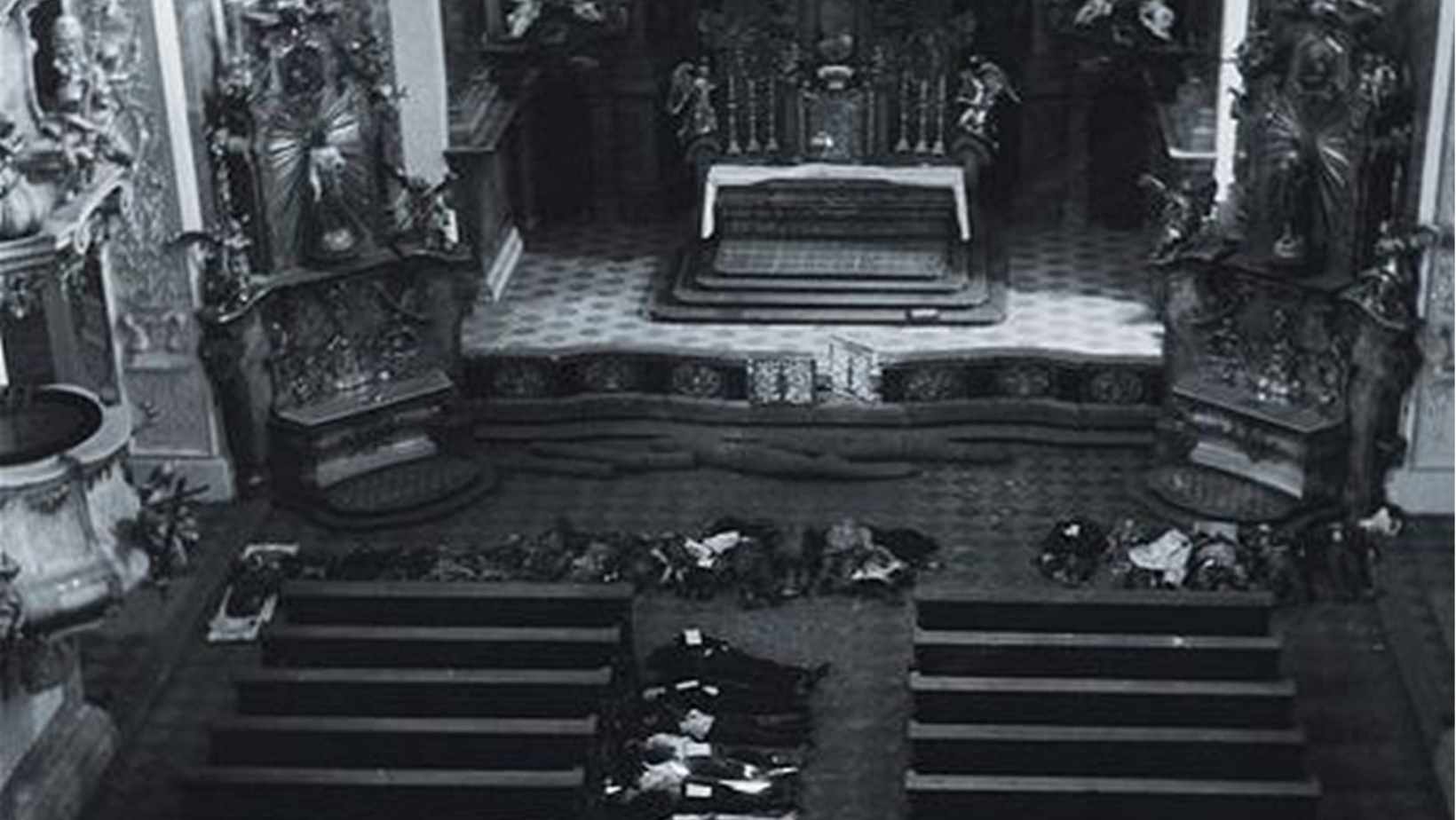
But the Vinohrady Synagogue, the largest Jewish Synagogue in Prague and one of the largest in the world at the time, was not so lucky. It was also hit by the bombs, and while it could have been preserved, Nazi occupiers in control of the city allowed it to burn to the ground. Today, it’s all but forgotten.
All the casualties were civilians, and not one of the city’s factories which could have been of use to the Wermacht was damaged.
One of the bombed houses belonged to a butcher called Maceška. In the course of clear-up, rescuers uncovered one cellar which was empty. However, in 1970, when the building was excavated, workers discovered another cellar with 23 human skeletons inside.
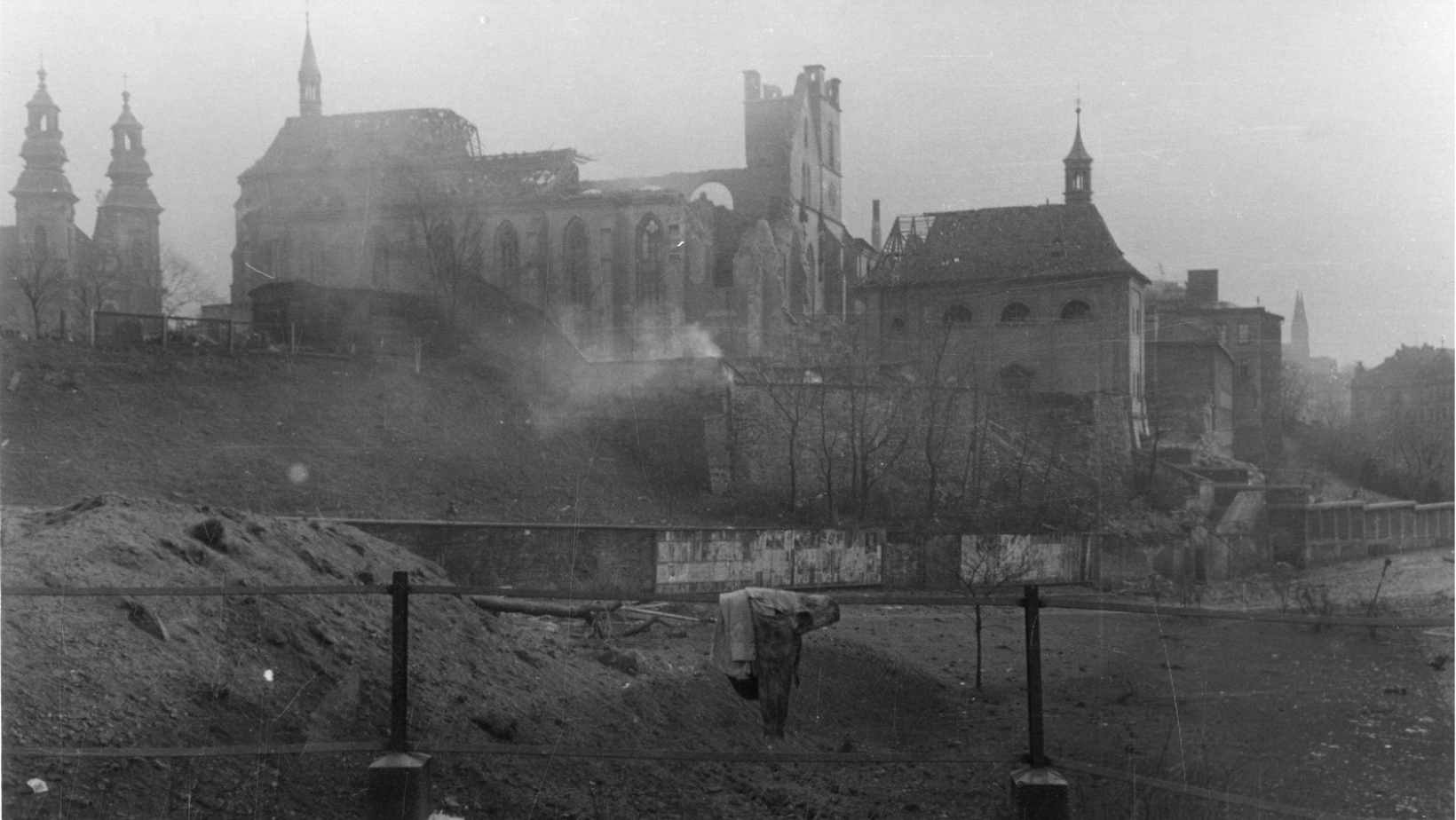
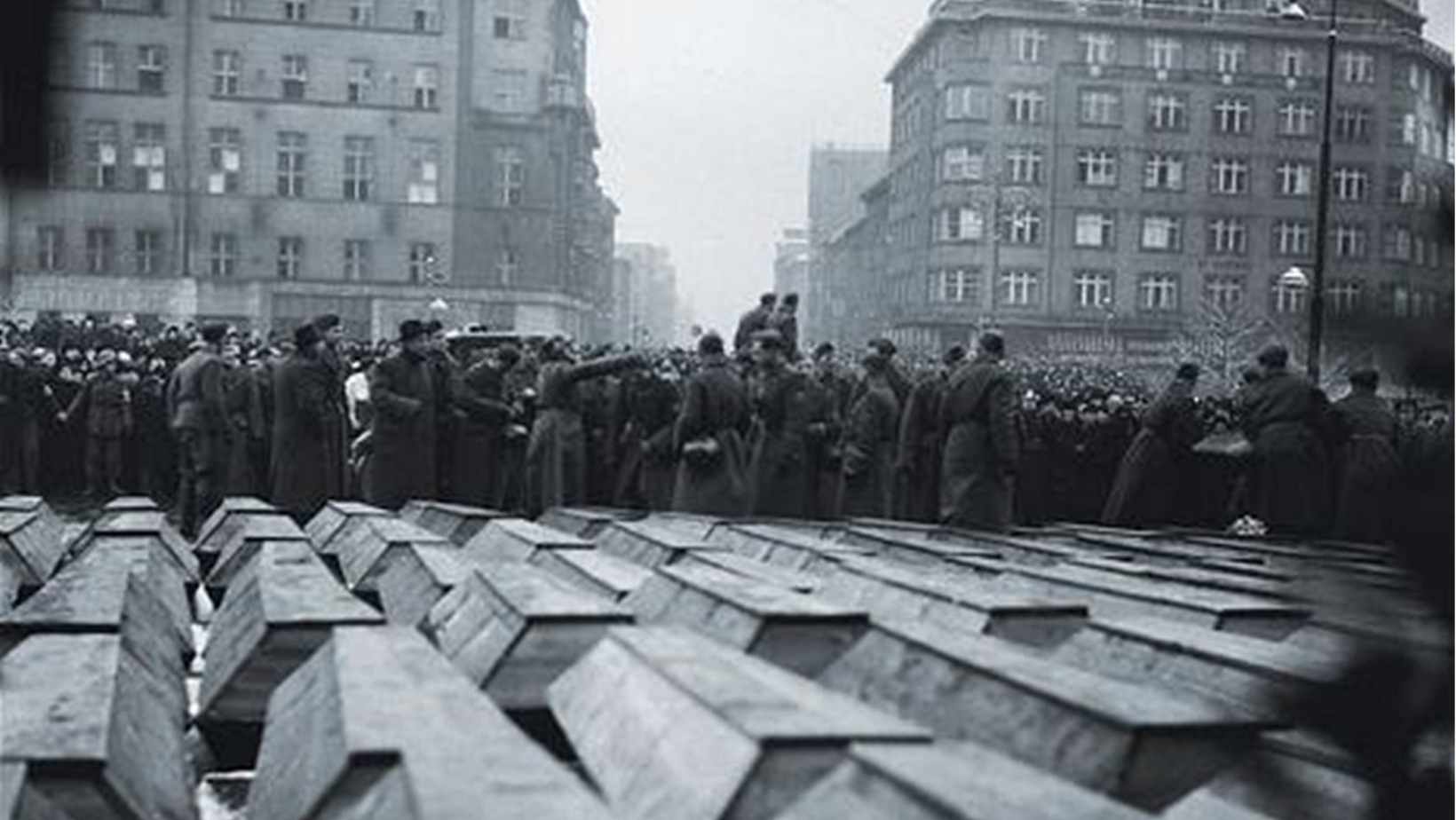
In the immediate aftermath of the bombing, Nazi forces used the attack to stir anti-American sentiment and justify their presence. Years later, communist forces would do the same.
The American pilots have voiced their regret many times, and some of them apologized to the relatives of the victims personally. But they have always maintained it was a mistake, and that the city which they were meant to destroy was Dresden, not Prague.
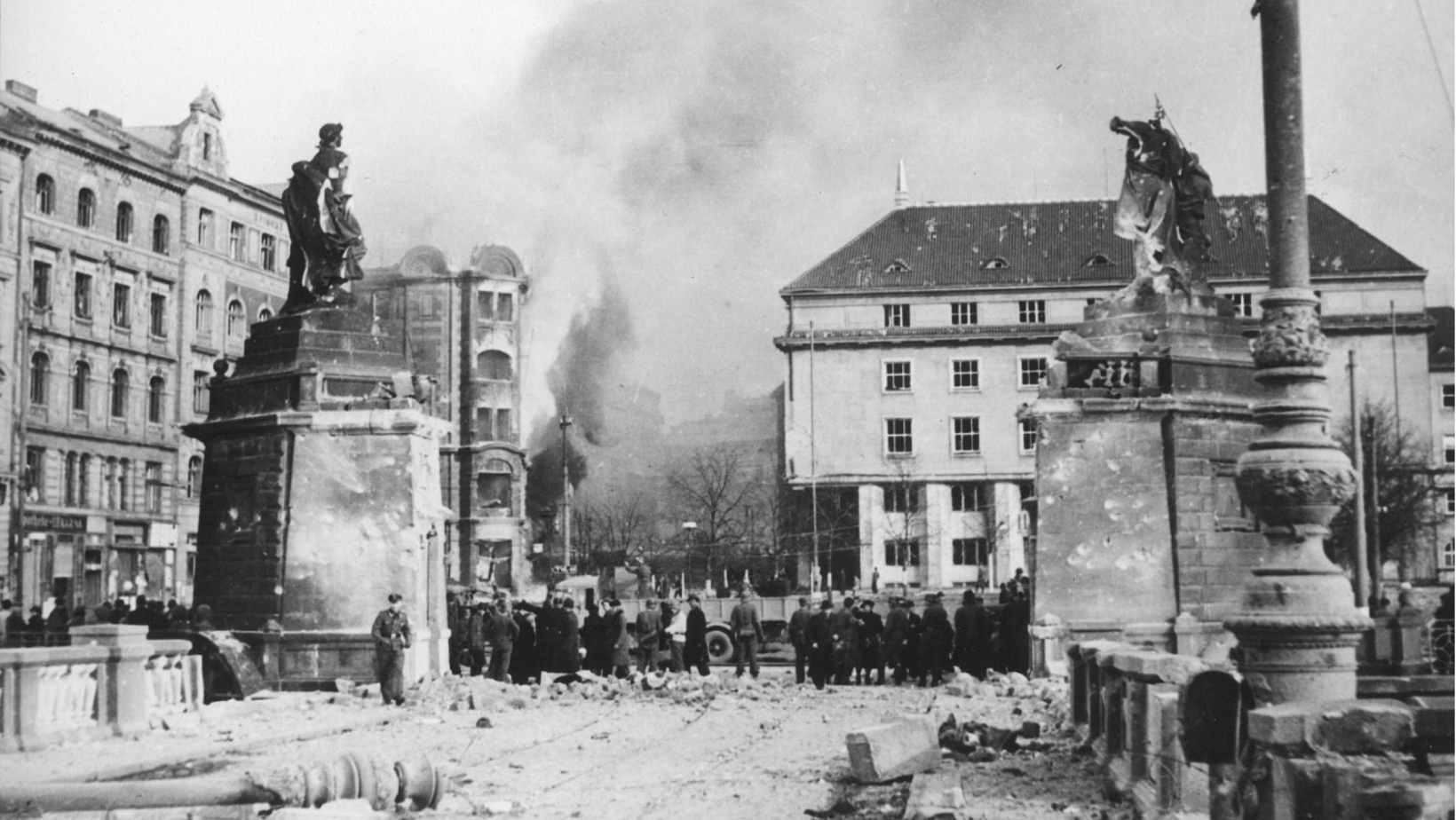
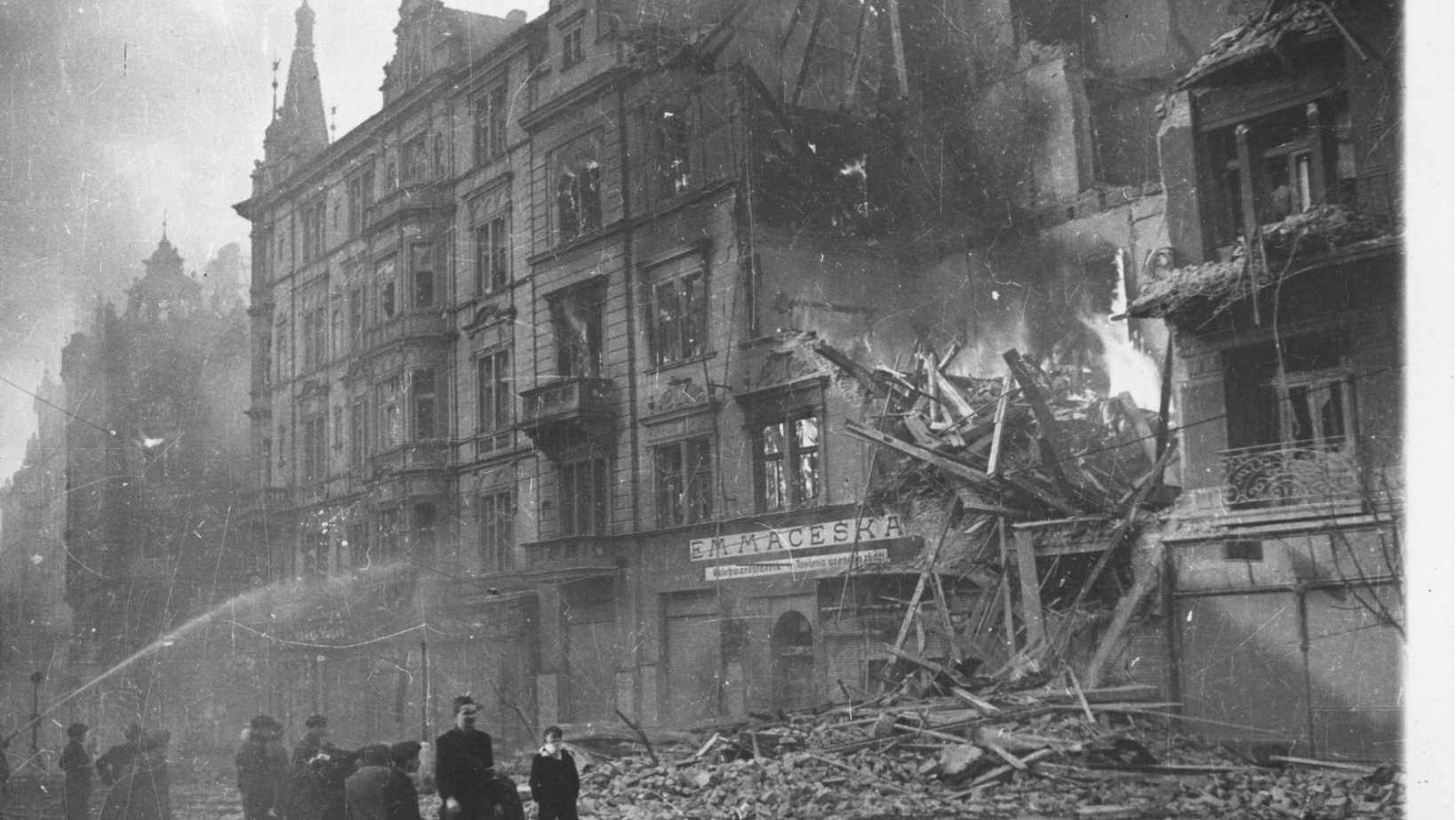

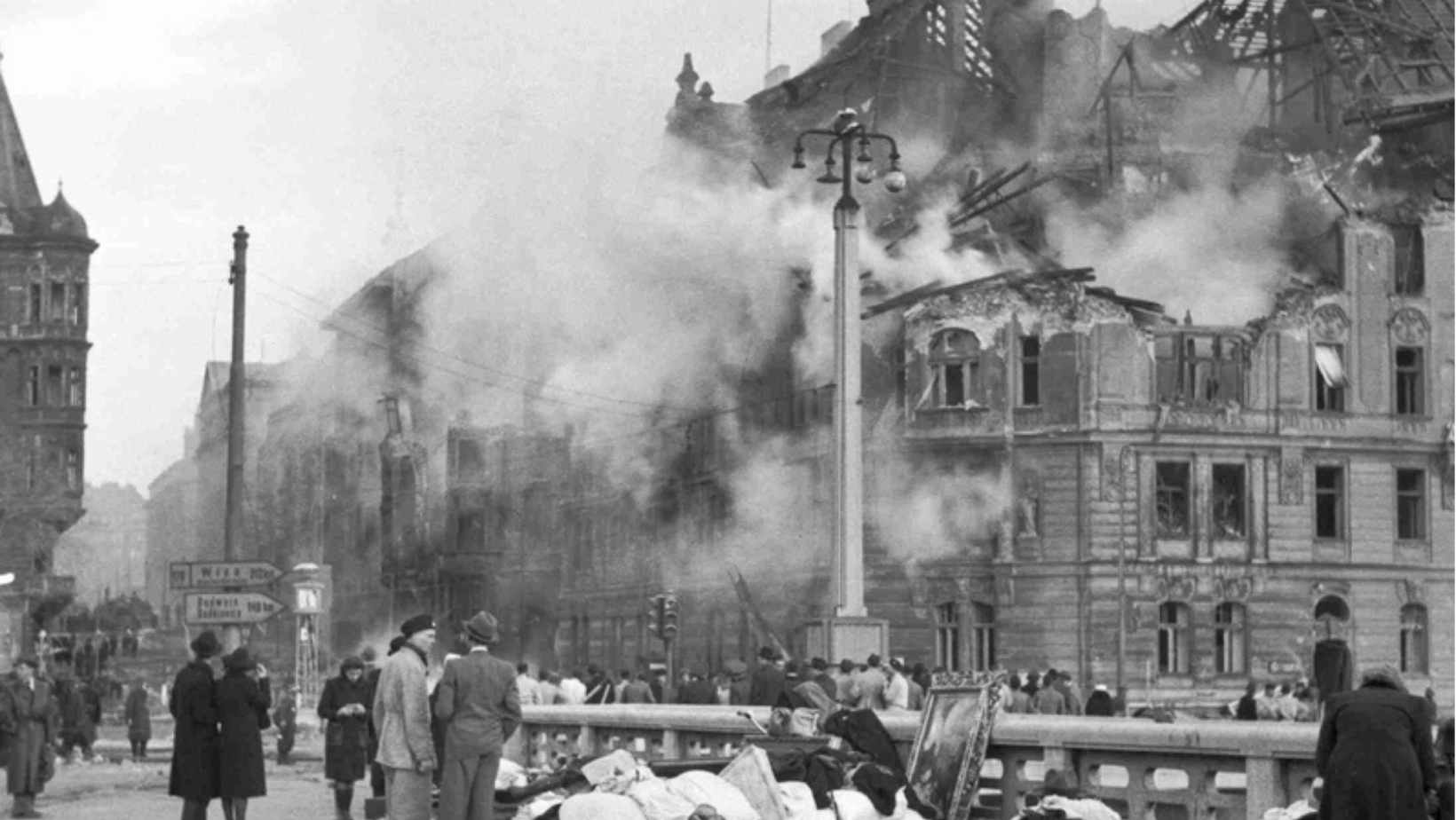

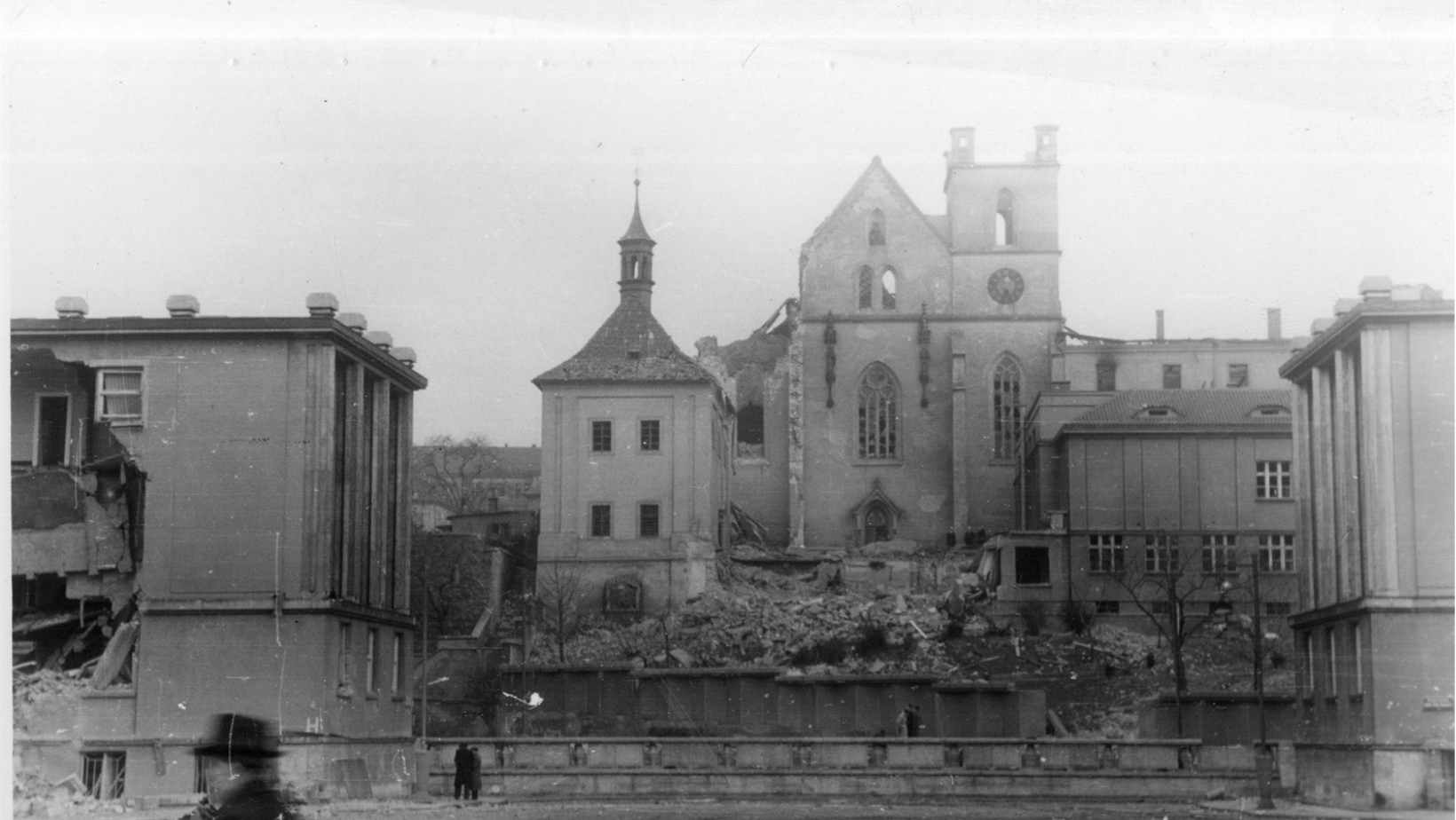
Just a few days remain until the Czech Republic’s most renowned horse race. Modeled after the Grand National in Liverpool, it’s actually the oldest and most challenging steeplechase in continental Europe.
It’s set to start on October 13, 2024, so don’t miss it!
The Velka Pardubicka Steeplechase or Grand Pardubice Steeplechase (the Czech Grand National) was first run on 4 November 1874, when 14 runners started the race.
The winner, Fantom, ridden by Englishman George Sayers received 11,700 florins for his owner Count von Cramm. The race has been held every year since on the second Sunday in October – except during the two world wars and the 1968 Russian invasion, and it has been abandoned twice due to frost and snow.
The length of the steeplechase is 6.9 km, with 31 obstacles. It usually takes 9–10 minutes to finish the course. The fastest time recorded was 8:58 minutes.
Horses starting in the race must be at least 6 years old and Czech horses must qualify by finishing at least one of four qualifying races during the season.
The most impressive obstacle is the so-called Velký Taxisův příkop (Great Taxis Ditch), which has the reputation of being the toughest obstacle of the race and it is jumped only once a year and only in one race.
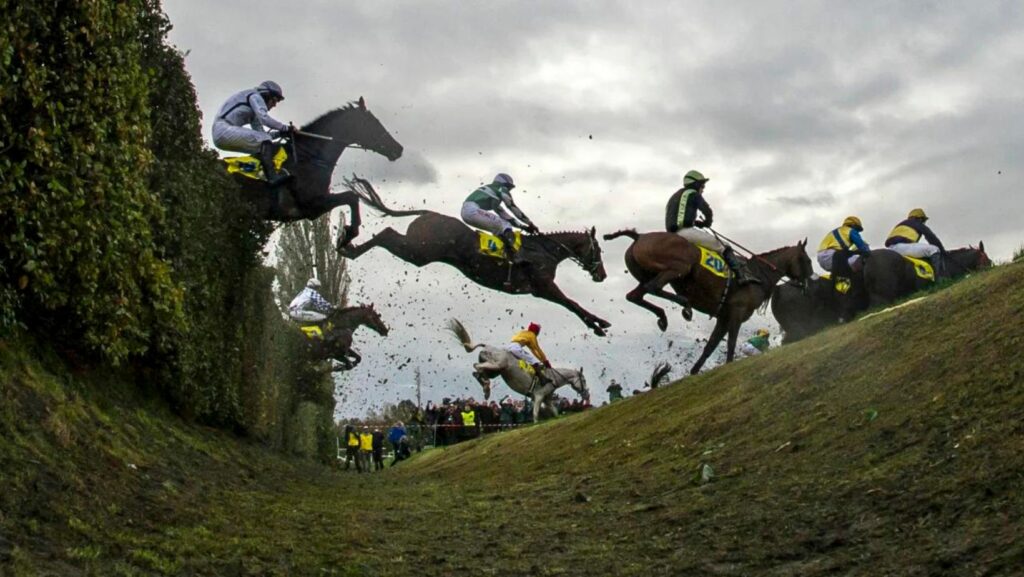
The most infamous obstacle in the race is the “Taxi Ditch” — it requires horses to jump over a 1.5 meter high hedge and a four meter long ditch which is one meter deep.
As well as the Taxi Ditch – which has become a symbol of the race – other obstacles include the Irish Bank – an obstacle where horses have to shimmer up and down a steep artificial bank, the French Jump – where a pair of hedges, spaced closely together, must be jumped as one, and a water jump which is three meters long.
Would you like us to write about your business? Find out more
The fountain in the lower part of Wenceslas Square at Můstek began its season today.
The fountain’s awakening followed winter preparations and maintenance work, including electrical inspections, and cleaning of both the surface and underground parts. It will be open daily from 8 a.m. to 10 p.m.
“Just like last year, the illuminated water jets will enliven Wenceslas Square day and night. This summer, the fountain will offer cooling and relaxation in the heart of the city for both residents and visitors. It will remain in operation until mid-October, depending on weather conditions. Starting next spring, we plan to resume operations in May,” said Michal Hroza, head of the City of Prague’s Infrastructure Council.
The fountain, with water jets reaching heights of 2 to 5 meters, was created as a recreational and calming feature during the lower square’s reconstruction, designed by architect Petr Kučera.
It was first launched in May 2022.
The square feature covers 16 square meters and consists of 16 jets set in LED reflectors embedded in walkable granite slabs. The facility includes an engine room with a 2,000-liter storage tank located in an underground shaft.
Controlled by a computer system, the fountain operates in recirculation mode, promoting ecological and energy-efficient operation.
Would you like us to write about your business? Find out more
Over 200 works, including prints, drawings, paintings, and even jewelry, will be showcased in a new exhibition at the National Gallery Prague (NGP).
The collaboration with the Louvre Museum in Paris delves into the fascinating world of Mannerist printmaking.
The exhibition will explore the evolution of this artistic style, known for its imaginative flourishes and symbolic content. It will feature works from 16th-century art centers across Europe, including Italy, the Netherlands, Germany, the Czech Republic itself, and France.
Mannerism emerged in Italy from the visual language of the High Renaissance and quickly gained international prominence. It is characterized by a refined elegance, rich imagination, and affinity for symbols and hidden meanings.
Printmaking played a pivotal role in its rapid dissemination, while also establishing itself as an independent artistic discipline during this period, and attaining both technical and artistic excellence. Most of the public knew the key works of Michelangelo, Raphael, and Giulio Romano, and the magnificent decoration of the French royal residence at Fontainebleau only through the medium of prints.
This exhibition traces the evolution of Mannerist graphic art, exploring its experiments, originality, and connections with other art forms, while testifying to its role in the artistic exchange between Italy and other European countries.
The exhibition benefits from an exceptionally generous loan from the graphic collection of the Musée du Louvre, particularly the rare collection donated to the museum by the renowned art collector Edmond de Rothschild. Some of these artworks have never been exhibited publicly before.
A genuinely exceptional addition to the Prague exhibition is a drawing by Michelangelo Buonarroti. The display will feature an array of works by master engravers and etchers, including Parmigianino, Schiavone, Cornelis Cort, Hendrick Goltzius, Aegidius Sadeler, Jacques Bellange, Jacques Callot, and many others.
More info:
From May 17 until August 11, 2024
Where: Waldstein Riding School
Opening time: Tuesday–Sunday, 10:00–18:00

